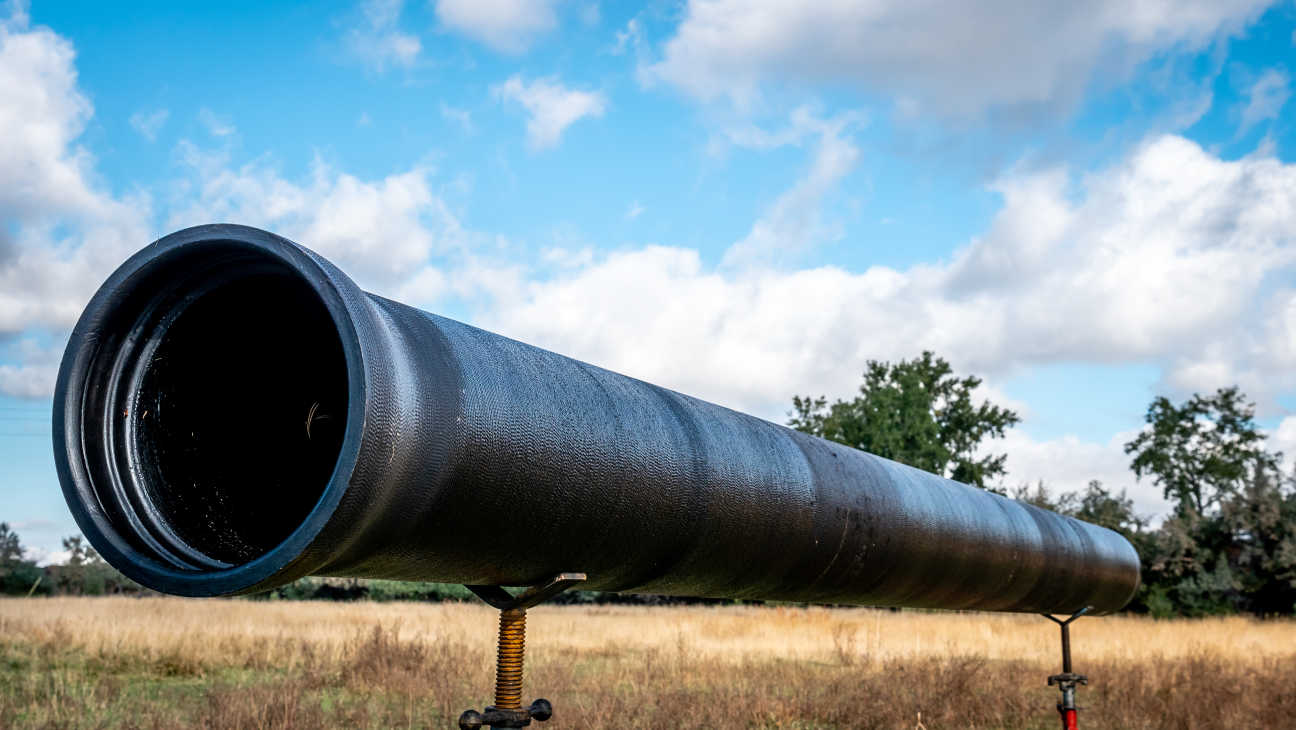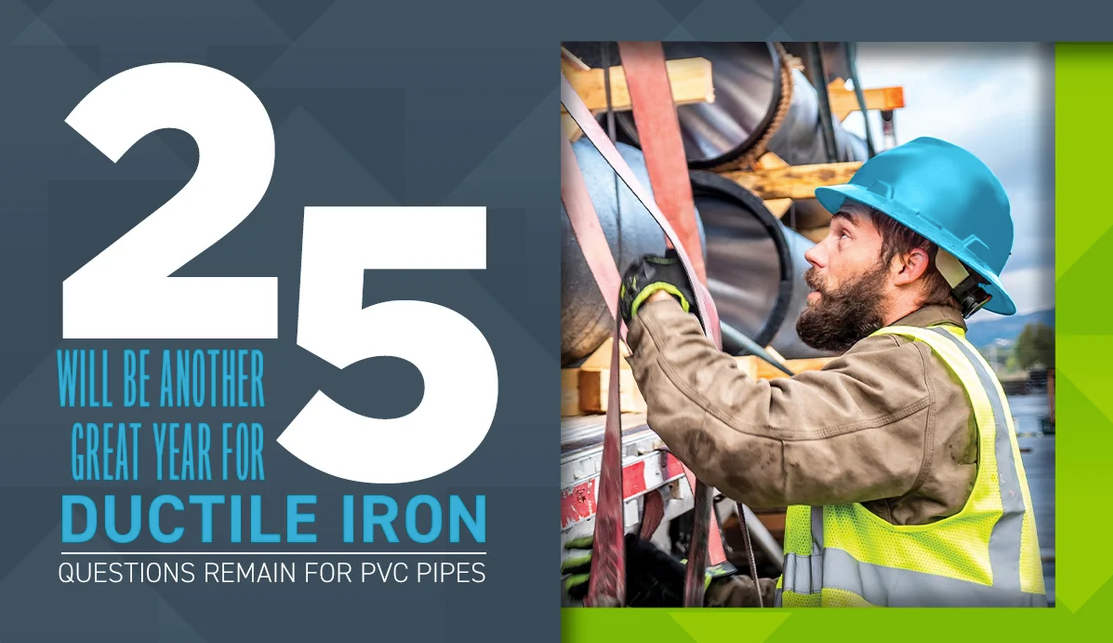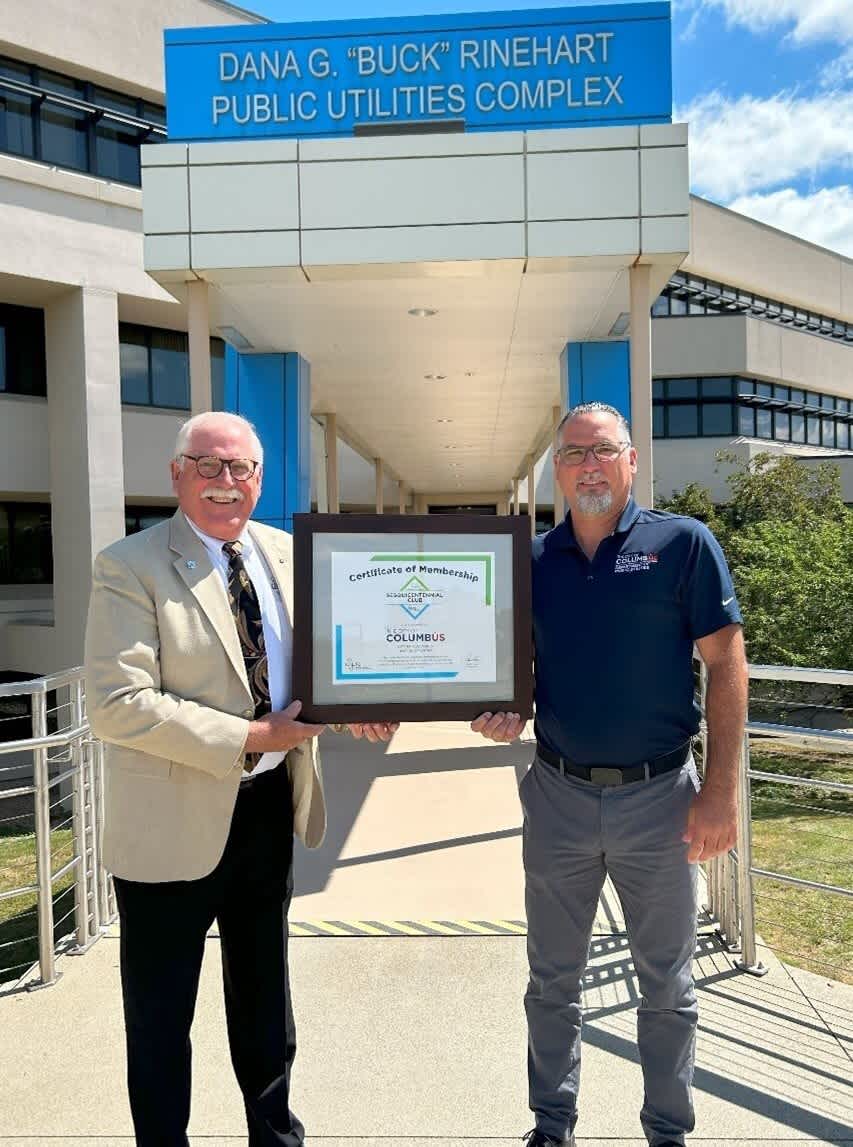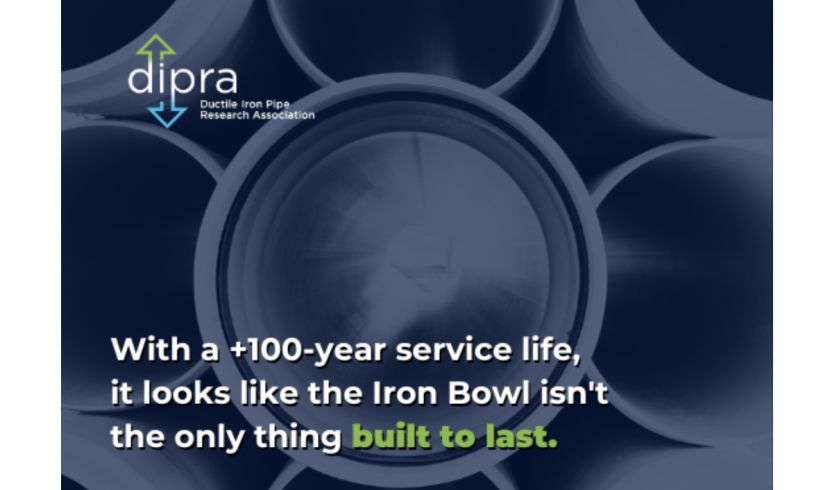
Twist of Facts from Uni-Bell on Cement-Mortar Lined Ductile Pipe
Feb 13, 2018
DIPRA pays diligent attention to detail to learn and advise on how Ductile iron pipe performs – and how to continue to improve its value to utilities.
Fallacies in Research Citations Raise a Flag of Warning on Believability - And Trust
There they go again! In a recent email blast, the Uni-Bell PVC Pipe Association (Uni-Bell) tried to turn facts upside down, this time asserting that a DIPRA brochure on cement-mortar linings contains evidence of a deteriorating Hazen-Williams flow coefficient. Uni-Bell’s attempt is an incredibly obvious effort to obfuscate fact by desperately grasping for an advantage that they do not have compared to Ductile iron pipe. Uni-Bell is struggling to overcome the energy disadvantage that exists when pumping through PVC pipe as compared to Ductile iron’s larger cement-mortar lined inside diameter. (Bonds 2017, Thomas 2016, McPherson 2009, Gaston 2014). Truth be told, Ductile iron’s on top.
Uni-Bell’s arguments often involve disparaging their competition, with a heavy, disrespectful belief that its audience is credulous and gullible. For example, under the heading, “A Significant Body of Research Also Disagrees with DIPRA,” Uni-Bell cites references that, when you take the time to read them, mostly say the opposite of what Uni-Bell claims. It’s a twist of facts to serve a scurrilous objective and demonstrates that, when Uni-Bell makes an argument, it automatically requires scrutiny to determine the fallacies. That, in itself, is a flag of warning as to believability – and trust. As an example, Uni-Bell cites an article by Sharp and Walski published in the November 1988 Journal AWWA (Walski 1988) saying, “Army Corps of Engineers – developed (an) equation for determining ‘C’ values for corrosion-prone pipe at any age based on roughness growth rate.” But, that article begins, in its introduction, “(t)he equations presented provide a quick method for predicting C-factors…in unlined metal pipes (emphasis added).” The article goes on to say, “(i)n modern cement-mortar lined and plastic pipes, internal roughness changes very slowly over the life of a pipe…”
Again, the truth is that there are ample technical articles and reports published by Journal AWWA, the Water Research Foundation, ASCE and others confirming the long-term viability of cement-mortar linings. (Muster 2011, Water Research Foundation 2011, Lee 2011, McPherson 2009, WSA Australia 2002, Hall 2013, Welch 1971, Miller 1965, Lamont 1981).
Another egregious effort is in Uni-Bell’s assertion that “DIPRA’s Testing Conflicts with Its Own Recommendations,” where they claim our brochure, “Cement-Mortar Linings for Ductile Iron Pipe,” belies a hidden discrepancy. It doesn’t. The DIPRA brochure includes the results of field tests conducted on in-service pipelines of various ages and locations where the C factors were measured. 43 flow test results were presented, with values ranging between 130 and 148 in pipelines from 5 to 77 years in service. It is the average of those measured results that was the basis for our recommended C value of 140.
Uni-Bell asserts their analysis found “(a) 12-inch cement-mortar lined iron pipe (sic) Greenville, TN had a degradation rate of 0.46 per year.” They cited eight such evaluations but, as is typical with Uni-Bell, did not “show their work.” The arithmetic was simple. Here, they subtracted the result from one of three Greenville, TN measurements (134 – the lowest of the three results), subtracted this from DIPRA’s recommended C value (140) and divided by the age of the pipe (13 years) to get 0.46!
This is shameful. DIPRA published three results for Greenville, TN: 134 (13 years), 137 (29 years) and 146 (36 years). Using Uni-Bell’s flawed method, Greenville demonstrates an improvement over time – with the last result indicating the C factor having increased by 0.17 per year!
The examples found in this Uni-Bell brief are too many to list, here. For the whole truth, an assessment is available by following this link, .
DIPRA pays diligent attention to detail to learn and advise on how Ductile iron pipe performs – and how to continue to improve its value to utilities. We do so out of respect for those who design and operate a vital infrastructure; and we do so because many of us have been there, doing those jobs. Uni-Bell’s efforts exemplify the “man behind the curtain” pretending to be a wizard. With this caliber of work, Uni-Bell will give us years of opportunities to fact-check, which we will do when we can break away from the more serious work we have ahead of us. The kind of work that actually helps utilities improve their systems.






